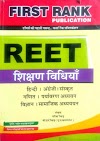HOW TO PREPARE FOR CAT THROUGH SELF-STUDY?
Students who are preparing on their own should keep in mind that CAT needs a disciplined and comprehensive preparation. Unlike a coaching institute where both of these factors are taken care by the management, in a self-study plan, you are the one responsible for this.
ACTION PLAN FOR THE STUDENTS WHO ARE PREPARING ON THEIR OWN:
STEP 1
Know about your familiarity and area of strength with respect to the kind of questions asked at CAT. To do this, take a diagnostic mock CAT. This will tell you your strong areas and weak areas across all the sections.
STEP 2
Chalk out a short horizon plan (daily or weekly) and long horizon (till CAT) plan. An easy way of doing this is to divide the number of chapters (or concepts) by the number of days in which you want it to cover.
In QA section, you should keep in your mind 70/30 rule. According to this thumb rule, approximately 70% of the questions in Quant come from 30% of the chapters, viz., Number System, Geometry, Time Speed Distance, Ratio proportion, Function/graphs, Equations, and Permutation and combination. If you are able to get even 3/4th of these questions correct, you will get 92+ percentile in QA. However, knowing that you have almost 100 days to go for CAT, it is suggested that you go through all the concepts and chapters at least once. Also, understand that almost half of the total number of questions will be fundamentals based questions with simple 1–2 step solution.
In LRDI section, students are expected to have practised different types of questions. This is one such section which students prepare on their own even if they have joined a coaching institute. Most frequently asked LR questions are of the following types:- arrangement-based questions (linear, circular, tabular), sequencing-based questions (loose sequencing and strict sequencing), Network diagram, Games-based and team formation questions. In DI, most of the questions will be based upon two or more than two types of charts. During previous years, both calculation intensive and interpretation-based questions have been asked frequently. Besides, questions from Data Sufficiency can also be asked. To prepare this section, keep a target of solving 4–5 sets every day. Try to ensure that the questions are of different type.
In VARC section, questions can be distributed into three types – (Type 1) Questions based upon logic like Para jumble, Critical reasoning, FIJ, Logical completion of idea, etc; (Type 2) Questions based upon application of grammar like Sentence correction and vocabulary-based questions like Fill in the blanks questions; (Type 3) Questions based on reading comprehension. This remains entirely an individual’s decision that which type of questions is the person most comfortable with (out of these given three types). In my perception, methods to solve the 1st type questions (i.e., logic-based) can be learnt easily with a bit of practice and ability to decode the logic behind the questions.
Fill in the blanks questions are designed to measure your ability to understand the intended meaning of a sentence. Each question requires you to analyze the context of a sentence and determine which word or words best complete that sentence. It is important to note here that even though you may not be aware of the vocabulary used, still you can solve at least some of the questions by using the context and indicator words.
Consider the example given below:
Q. Though he claimed the business was _______, his irritability _______ that claim.
A. sound ... belied
B. expanding ... supported
C. downsizing ... vindicated
D. booming... affirmed
The key words here are “Though” and “irritability”. It gives an idea that the words to be filled in the blanks should be of opposite connotation. Option (a) is the only such option, and hence the answer.
STEP 3
Join any national level Test series, and analyze your performance in all the tests thoroughly. Make a table containing two columns – column (1) questions that you got right, and column (2) questions that you could have got right. This way, you can analyze the gap between your potential and performance in every test. In every subsequent test, this gap should decrease with an ideal level of zero.
Further, the 2nd column should be distributed into three parts – Conceptual Error (you were not aware of the concept), Practice Error (You know the concept but have not practised upon the variety of problems based on this concept), and Calculation Error (or Silly mistake). Once you have got this self-assessment report, before taking the next mock test, ensure that you have worked upon the feedback.



